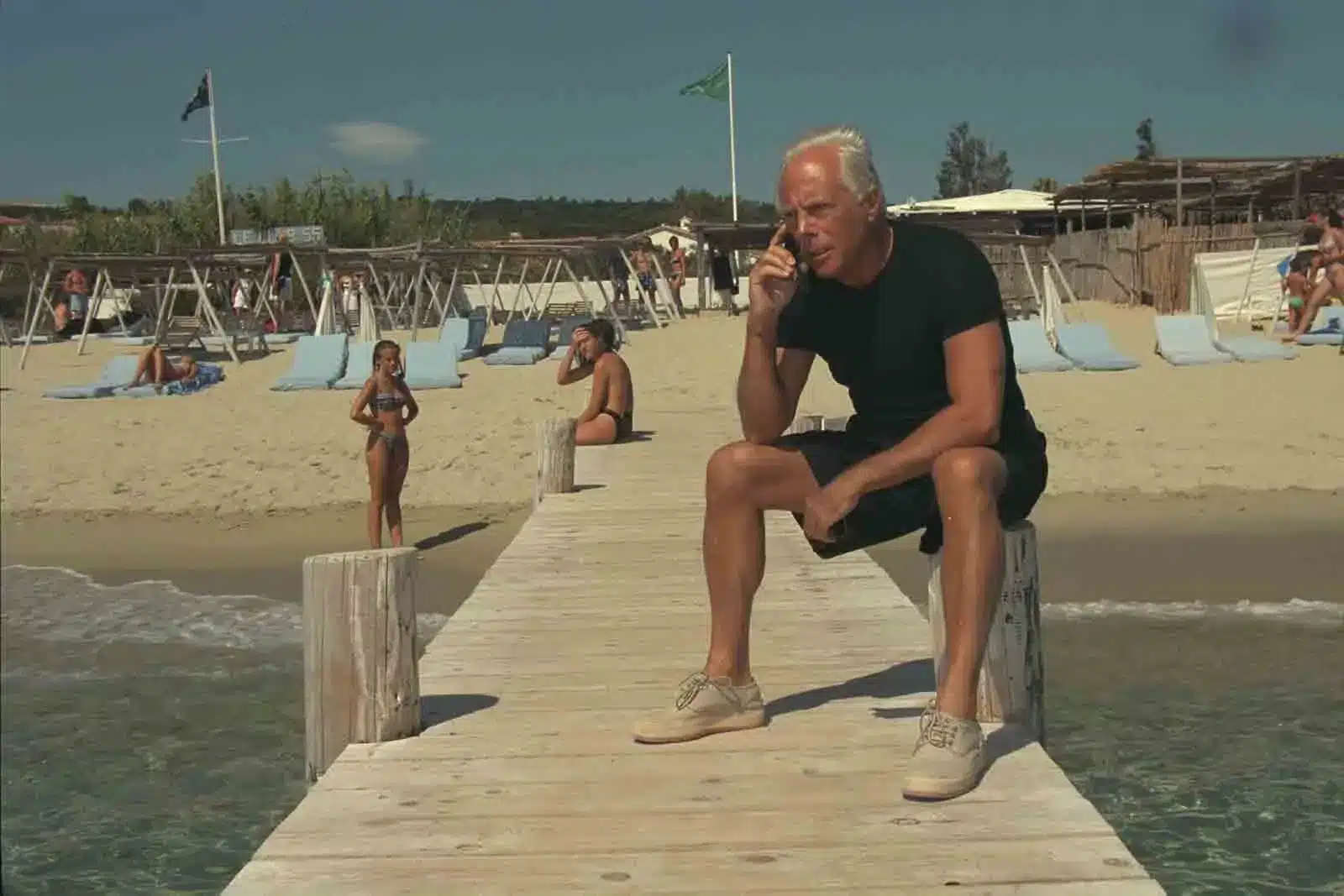There is something about Giorgio Armani (GA) that is unmistakable, yet hard to describe, and that is perhaps his indefatigable timelessness. We all know him as a character, a profile, both imprinted as a powerful image (the quintessentially Italian dress code, tanned, fit, with perfectly combed white hair and a sleek dress-code) and through his strong brand values, communicated through every idea or product stemming out of what forged the Armani empire in the past 50 years. He’s been consistent yet disruptive throughout the years, a regular figure in the fashion schedule yet escaping full access for the sake of privacy — or what might actually be elegant timidity. Giorgio Armani seems to us a man of values, ruled by regularity and discipline as well as a real aesthete. After an extraordinary career and now arriving at the stately age of 90, we propose to decipher him and his work through the homes he inhabits — on land and on water, and to abide by his rules.
GA has been around the fashion calendar for many decades – yet always induces a sort of novelty and rigour the crowd is courteously invited to learn from. His shows always begin on time, for example, which is probably the best and simplest way for a business to express chore values. His past collections are now gaining the historic value they deserve on top of their aesthetic perfection, with current archival media putting the focus on his 80s and 90s forward-thinking (see @myarmaniarchives on instagram for example). These pictures, magazine clippings, advertisements and movie clips are not only proofs that Armani has succeeded in maintaining stability, it also confirms that he has achieved in quietly disrupting the way fashion houses traditionally worked, notably with the launch of groundbreaking concepts both in fashion and culture. EA Magazine was created in 1981, Armani Casa in 2000, Armani Exchange in 1991 as well as haute couture with Armani Privé in 2005… and the list doesn’t stop here. Serial entrepreneur Armani also ventured in the highly competitive hospitality business, opening with great success the Emporio Armani Caffè in a strategic hotspot in Saint-Germain-des-Prés in 2000 as well as many branches since then, plus an über-luxury hotel line. This is topped by a wonderful crowd-gathering bookshop in central Milan (Armani Libri), managed by publishing masters Koenig Books.
Here is definitely a man ruled by aestheticism and who allows no concessions when it comes to committing to a vision. After a second look at his work but also at his various homes dotting the globe, it appears GA possesses yet again another layer to his character, a more secret and personal side to the empire. Indeed, one can easily find the fascinating links weaving together his fashion lines, homes or yachts. Everything stems from the same “emperor” mind with a clear, defined and generous vision. They share the same knowledgable inspirations; clean lines, essentially monochromatism with reverences to shades of black, blue and beige, a researched minimalism that brings out mostly Asian and African influences transcended in European settings; one can indeed find in his interiors hints of a Balinese hut, but also the delicate textures of a Japanese house dressed down in mahogany earthenware on a Jean-Michel Frank console… Eventually, however, it all appears quintessentially Armani – a mix between Italian flair and the true, organic essence of each loci, whether it is the burned rocks of a Sicilian island, the stately and formal appearance of an Italian country home, or the quiet appearance of a stone-clad Provençal estate. Armani’s choice of “settlements” already disclose a lot about who he is as a designer, but also and more preeminently as a human being.
Throughout his life and with great flair, he dotted his houses in places meaning a lot to him as an Italian man. He has a home in Milan — where his headquarters also sit — within an apartment designed by Peter Marino in 1980, as well as country homes in Pantelleria, Forte dei Marmi and Broni, where he cultivates and curates for each space a different ambiance, fauna and flora (he has horses and llamas in Broni, and cultivate local plant species in his Pantelleria hideaway). He says he couldn’t imagine himself live longterm anywhere else than Milan. The city somewhat holds similarity to him; a refined outward appearance, bordering with the austere, but keeping its best kept secrets close inside and private to a selected few. For the other locations, escapism seems to be the watchword, but never from Italy. Rather, it seems as if GA has succeeded in bringing and exporting the best of Italian values abroad (count New York City, Antigua, St. Tropez and the Engadine Valley in).
Mr. Armani can be found anywhere near the sea, but doesn’t need a view — air, scents and winds; the ambiance is sufficient. And when he finds himself amongst the expansive mountains of Switzerland, this vital blue element can still be found back in the pure stretches of alpine clear sky — the valley has the most sun exposure all over Switzerland — or in the nearby lakes of St. Moritz or Silvaplana. Italy never truly leaves an Armani interior. There’s a coherence in volumes, colours and textures in everything he does and that applies to the way he and his entourage lives, forming its very own art of villegiatura. The latter transcribes what could be defined as an “ultra-relaxed” attitude which infuses calm and elegance over alternatively the people that frequents him as well as the places that he frequent. The way this is reflected in his homes is mastered, controlled, the outcome being both sensible and of purified beauty. All of this make us think of GA first and foremost as an interiors visionary prior as to a fashion designer, who has instilled a true lifestyle of reference alongside his long- lasting empire.














